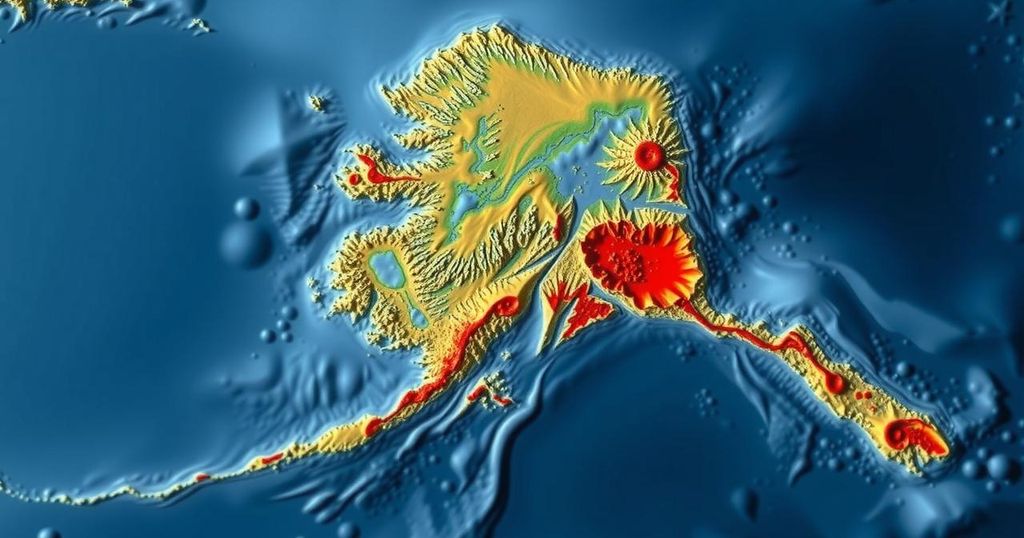An earthquake measuring 1.7 occurred near Tatitlek, Alaska, on November 6, 2024, at a depth of 9.9 miles. The event is situated 45 miles northwest of Tatitlek, highlighting the region’s seismic activity attributed to various tectonic features, including the megathrust fault and local crustal faults.
On November 6, 2024, an earthquake event recorded a magnitude of 1.7 near Tatitlek, Alaska, occurring approximately 45 miles northwest of the town at a depth of 9.9 miles (16 km). The seismic event transpired at 2:48 AM AKST and has not been reviewed by a qualified seismologist. It is located significantly far from notable cities, including Valdez (45 miles W) and Anchorage (76 miles E). This event is representative of the diverse tectonic activity occurring within Southcentral Alaska, where various seismic hazards are prevalent due to multiple geological features. The tectonic activity in Southern Alaska is primarily influenced by the megathrust fault formed at the boundary of the subducting Pacific Plate and the overriding North American Plate. This region is historically significant, as it hosted the devastating M9.2 Great Alaska Earthquake in 1964, which remains the second most powerful earthquake ever documented globally. This profound seismic activity is further complicated by the Wadati-Benioff Zone, where intermediate-depth seismicity manifests as the Pacific Plate descends. In addition to these deeper seismic features, the crustal seismicity in Southcentral Alaska is attributed to established geological structures. These include the faults prevalent in the Cook Inlet basin, the Castle Mountain Fault, and a diffuse band of seismicity extending towards the Denali Fault. Historical events, such as the April 1933 M6.9 earthquake and the 1984 M5.6 Sutton Earthquake, resulted from these local faults, elucidating the complex seismic landscape in the region. The interactions among these tectonic elements contribute substantially to the seismic risk that impacts both inhabitants and infrastructure in southern Alaska.
The seismic landscape of Southern Alaska is characterized by a complex interplay of various tectonic features, which has significant implications for earthquake activity in the area. The region is notable for potent seismic events, including the landmark 1964 M9.2 earthquake, a product of the interaction between the Pacific and North American plates. Understanding the tectonic setup, including the Wadati-Benioff Zone and local fault structures, is crucial for assessing earthquake risk and potential impacts on the region’s communities.
In summary, the November 6, 2024 earthquake demonstrated the ongoing seismic activity inherent to Southern Alaska due to its unique tectonic features. The interplay between the subducting Pacific Plate and the North American Plate, as well as local fault systems, contributes to the risk of significant ground shaking and structural damage in the region. Awareness of these geological dynamics remains vital for effective preparedness and response strategies in the face of potential seismic events.
Original Source: earthquake.alaska.edu






